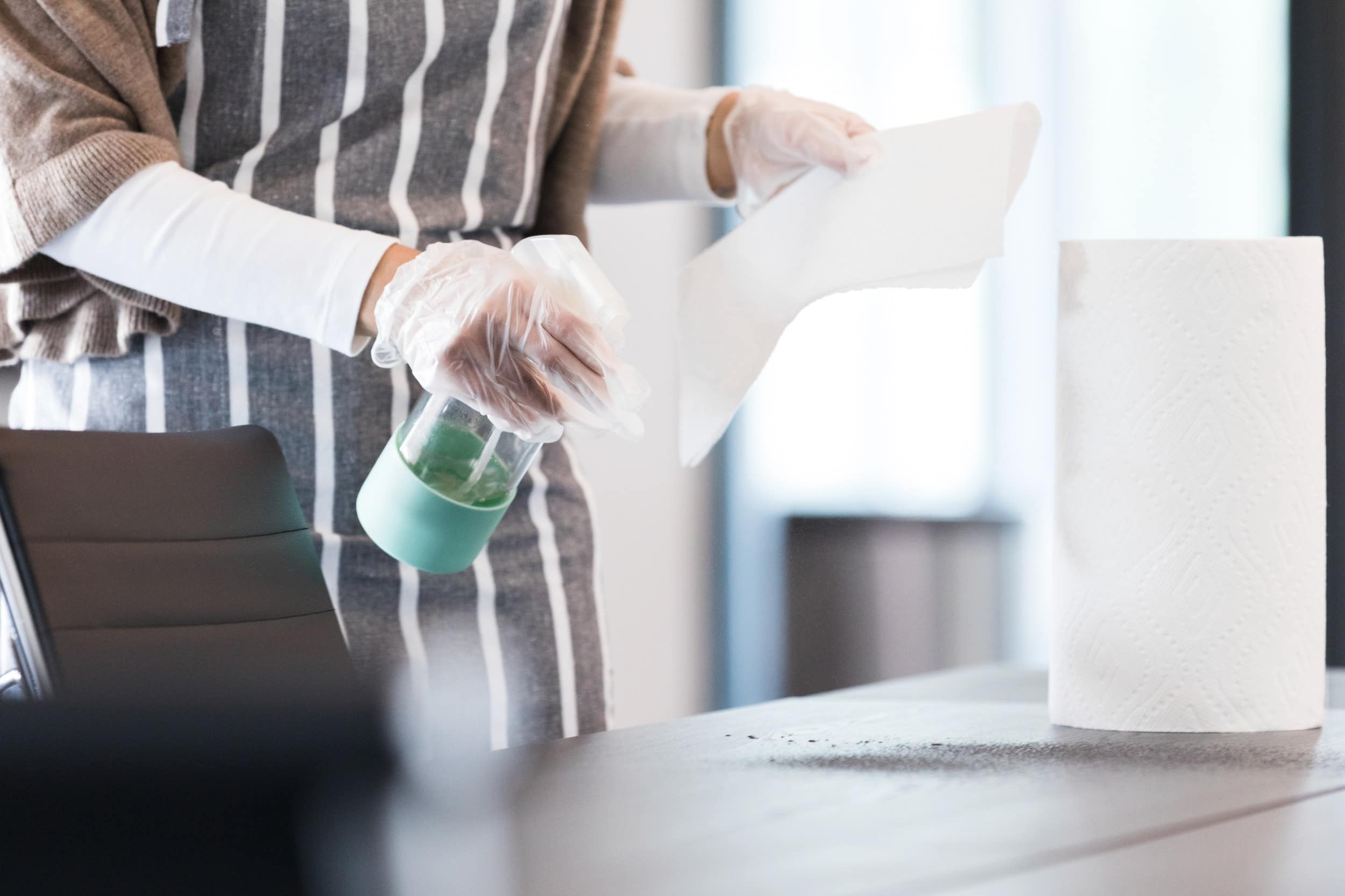Maintaining Cleanliness in Shared Workspaces

Can Shared Workspaces Be Clean?
Fellow germophobes-I get you.
I understand why you insist on wiping down every door handle and surface you need to touch with an antibacterial wipe. I fully support you carrying several bottles of antibacterial sanitizer everywhere you go in your bag.
The thought of the thousands of germs that exist in every square inch of surfaces and items is scary. The truth is that germs, whether good germs or bad germs, are everywhere. Germs exist in the air, on your clothes, countertops, and surfaces Further, germs can be transmitted through the air and direct contact.
In workplaces, and shared workspaces in particular, bugs and bacteria are typically discovered in high traffic areas. High traffic areas are where many people make contact with the same items and surfaces.
In order to maintain a clean, shared workspace, the following practices are recommended to detail shared workspace hotspots.
Shared Workspace Hotspots
Shared desks
The work desk is one of the most popular hotspots for germ hosting. The work phone on the work desk alone holds over 25,000 organisms per square inch. This provides significant opportunity for germs and bacteria to replicate. Disturbingly, the overall desk has the potential to hold 400 times more germs than toilet seats.
The desk can be maintained by regularly wiping the desk, along with the items on it with antibacterial wipes throughout the day. Extra attention should be directed to phone ear piece, phone headset, phone mouth-piece, computer keypad, computer mouse, and computer screen.
Writing utensils
Bags
Fridges
The workspace refrigerator is holding more than your lunch. The refrigerator is a major hosting site for bacteria such as Listeria, Escherichia, and other harmful, food poisoning micro-organisms. These bacteria are easily transmissible between coworkers. Listeria and food poisoning carry extreme symptoms of fever, body chills, muscle aches, nausea, and diarrhea. While the germs are easily transmitted, symptoms of such bacteria may take days before they appear.
Safe refrigerator practices include ensuring that the temperature of the refrigerator should never plummet below 50 degrees Celsius, and keeping raw food away from ready to eat lunches.
Mice and Keyboards
The shared workspace computer mouse and keyboard is a huge potential hub for germs and bacteria. The mouse and keyboard usually sit on the workspace desk, which is a huge germ host itself. On top of enduring heavy fingerprint traffic, the computer mouse and keyboard also susceptible to germs from food and beverage residue. More than 3,000 micro-organisms are rampant per square inch on a keyboard. Over 1,600 micro-organisms are prevalent per square inch on a computer mouse.
Like the workspace desk, the computer mouse and keyboard should be thoroughly wiped with an antibacterial cloth. It is ideal for these items to be wiped down several times a day. However, if that is not feasible, they should be wiped on a weekly basis at minimum.
Drink machines and cups
The drink machine (in our building, we use a Bevi) is a user-friendly water dispenser that provides drinking water for consumption. It may come attached with drinking cups. The germs come from heavy finger traffic and people re-using their cups to get water.
To prevent germ growth, encourage workers bring glass bottles for their personal water consumption. For other beverages such as coffee or tea, use your own personal mug rather than using the office coffee mugs.
Printer
The workspace printer holds more bacteria than a dog’s bowl. The best method to clean it is to wipe it down with an antibacterial cloth; paying extra attention to those areas that are touched the most by workers. You should immediately wash your hands or use antibacterial gel after touching to rid your body of any germs.
This list is not exhaustive of all workspace hotspots to host germs. All workspaces should be thoroughly cleaned and sanitized on a daily basis. Such practices coupled with the recommendations listed above, yield a reduction in bug and bacteria hosting germs.





